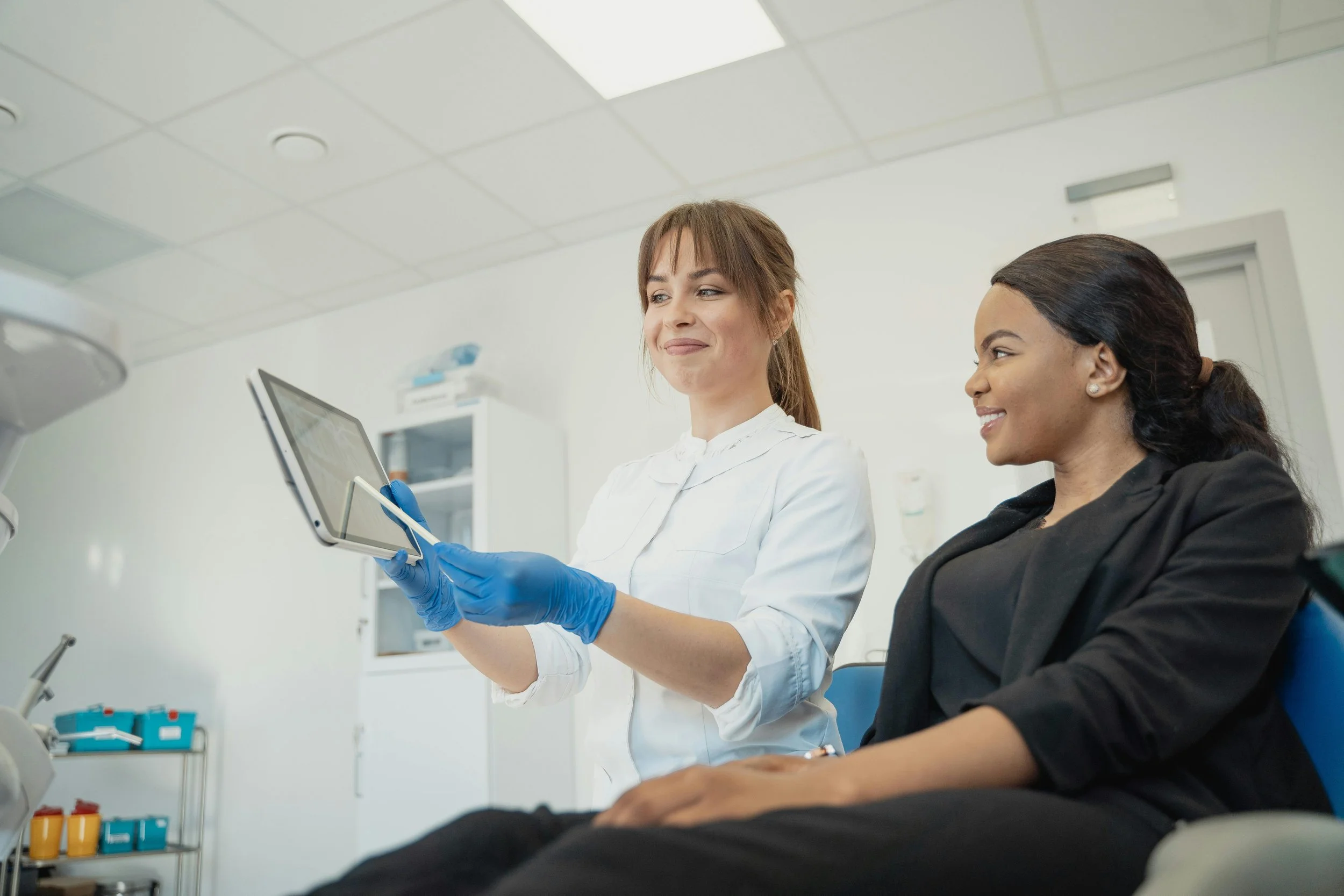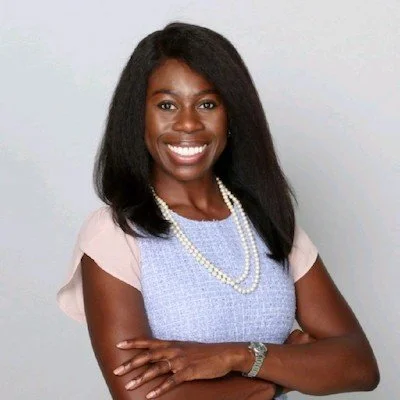The Power of Early: How CancerIQ Helps Patients Catch Risk Before Diagnosis
Every year, millions of people face a cancer diagnosis that might have been prevented or caught earlier if the right tools were in place. The challenge isn’t that innovation is missing—it’s that proven tools for risk assessment, genetic evaluation, and preventive care are often trapped inside academic medical centers, out of reach for most patients.
That’s the insight that drove Feyi Ayodele to launch CancerIQ in 2014. Inspired by her mother’s work as a clinician and her own experience in finance and consulting, Feyi saw an opportunity to democratize access to precision health. Her company equips community-based providers with easy-to-use technology that identifies at-risk patients, connects them to genetic evaluation, and ensures they stay on track with personalized prevention plans.
Today, CancerIQ is being used in more than 65 health systems nationwide. Its impact is already measurable: doubling service capacity for genetic counselors, boosting compliance with cancer screening, and shifting diagnoses to earlier stages where treatment is more effective and less costly.
We sat down with Feyi to talk about her journey, the real-world patient stories that keep her going, and her vision for making precision cancer prevention accessible to all.
You’ve said many of the tools to get ahead of cancer already exist—they just need to be extended beyond academic centers. What do you mean by that?
FA: The first tool you need is risk assessment. In academic medical centers, a student, resident, or coordinator often spends time gathering a patient’s full family history and connecting red flags to clinical guidelines. But 85% of patients are seen in community settings where there isn’t that time—and providers may not be up to date on guidelines that change multiple times a year.
CancerIQ brings those same tools into everyday clinics. We make it simple to collect a patient’s risk information and overlay the latest guidelines so providers can identify who’s at elevated risk. We also automate much of the genetic evaluation process, which is critical given there are only about 660 cancer genetic counselors nationwide, most concentrated in academic centers. That allows everyday providers to offer primary genetics care, while reserving counselors for the most complex cases. Finally, we make sure patients actually follow through on their personalized prevention or early detection plans—a task that usually requires teams of nurse navigators in academic systems. With CancerIQ, community health systems can deliver that same level of navigation without needing to hire new staff.
CancerIQ is now in more than 65 health systems. Can you paint a picture of what that impact looks like at the population level?
FA: Our customers are often oncology service line leaders. Oncology is one of the biggest contributors to hospital revenue and one of the fastest-moving fields in medicine. These leaders want to engage patients before a cancer diagnosis, especially in competitive markets.
With CancerIQ, they can establish high-risk programs that attract patients earlier, identify cancers at earlier stages, and keep those patients within their system for ongoing care. For example, we’ve helped double the capacity of existing genetics programs, identify more high-risk patients, and even stage-shift outcomes. In some health systems, we’ve seen a 42% reduction in late-stage breast cancer diagnoses, and in lung cancer, we’ve helped detect about 10 early-stage cases per 3,000 patients targeted.
We also drive measurable improvements in compliance—like a 25% increase in breast cancer screening and nearly 3x higher colon cancer screening rates in certain women’s health settings. The value starts in oncology but ripples across the entire health system.
What was the first real-world moment when you knew CancerIQ was working?
FA: Early on, I built a financial model with assumptions about how many patients would be identified, tested, and guided to follow-up care. With our first customers, we tracked every number weekly—how many were screened, how many tested positive, what care plans were created, and what revenue was generated.
Not only did that model prove accurate, but when we later validated with actual claims data, we found the ROI was 8–10 times higher than our estimates. That’s when I knew we were delivering something powerful—not just for patients, but for the financial health of our customers.
And it’s not only about numbers. In one early program, we posted stick figures in the staff break room representing every patient identified as high-risk. It gave frontline staff a tangible reminder that their work was changing lives.
Can you share a specific example where CancerIQ helped a provider catch cancer risk early?
FA: A well-known example is actress Olivia Munn. She tested negative for genetic mutations but, through a lifetime risk calculation, was flagged for additional screening. Less than six months after a clear mammogram, her breast MRI found an aggressive early-stage cancer. That second test—guided by her risk profile—made all the difference.
CancerIQ enables that kind of care in everyday clinics. Without it, a patient might wait a full year for another mammogram, and the cancer would be caught much later.
How does CancerIQ change the daily workflow for providers?
FA: We design it to be minimally disruptive. In primary care, for example, we built a patient-initiated process where patients complete assessments ahead of visits, receive tailored education, and even access telehealth genetic counseling. By the time they meet with their provider, the next steps are already clear—making it easy for clinicians to confirm and move forward without adding to their already full agendas.
Can you share a story of how CancerIQ brought precision health to a community that might otherwise have been overlooked?
FA: One of our earliest clients was OSF Healthcare in Southern Illinois. They’d had an open genetic counselor position for years that they couldn’t fill, and patients often had to travel hours for care.
We partnered with them to design a nurse practitioner–led program supported by CancerIQ software and decision support. That single nurse practitioner role has now expanded into a fully scaled program with multiple providers seeing thousands of patients annually—all in a community that previously had almost no access to genetic services.
For hospital executives, what’s the “aha moment” when they realize CancerIQ isn’t just good for patients, but also good for the bottom line?
FA: One C-suite leader told me directly: 50% of their health system’s revenue was tied to oncology. As newer therapies shift from infusions to pills, they were deeply worried about the financial impact. Preventive oncology and high-risk programs became part of their strategy to sustain revenue in a healthier, future-oriented way.
HealthX Ventures is known for rolling up their sleeves with founders. How has HealthX helped you beyond capital?
FA: HealthX helped us with our Epic playbook, which is so important if you’re innovating in the healthcare IT space—from knowing who to hire, how to build the right relationships, and how to navigate Epic’s ecosystem. Without that guidance and insider perspective, I don’t think we’d be where we are today.
What advice would you give other healthcare founders who want their innovations to create real-world impact—not just look good on paper?
FA: Make sure your company benefits multiple stakeholders. CancerIQ helps patients and providers, but it also creates value for genetic testing companies, pharma developing targeted therapies, and payers trying to reduce costs. That breadth of impact opened up multiple commercial and partnership opportunities for us. My advice: build a business that’s a win–win–win, and your innovation will thrive.
As a patient reading this, how do I get access to CancerIQ or bring it to my healthcare provider?
FA: CancerIQ is now offered through more than 60 healthcare organizations across the country—and more health systems like BayCare and Hackensack are expanding access community-wide. That momentum is so exciting because it means patients no longer have to wait for a specialty appointment to benefit from precision prevention. If your local health system isn’t offering a risk assessment yet, ask about it—every conversation like that helps bring proactive, preventive care to more communities.
Note: This interview was lightly edited for readability.


